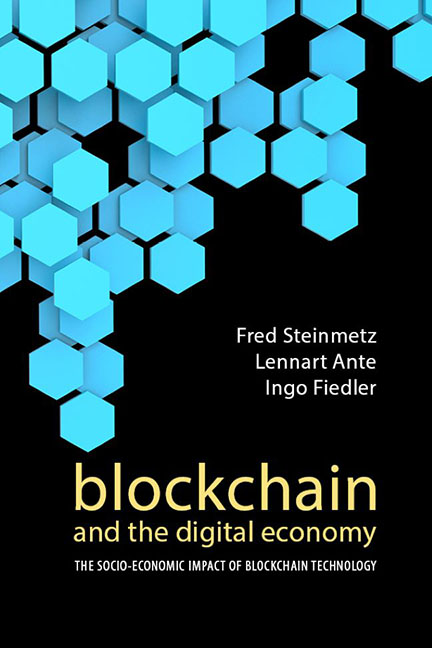1 - Introducing blockchain
Published online by Cambridge University Press: 20 December 2023
Summary
To appreciate the potential that blockchain technology offers, we need to explain how blockchain systems work and what their key characteristics are. We aim to keep the description simple and accessible and work our way through the various elements that make up the blockchain system step by step.
In its pure form, blockchain can be described as a data structure or database. In a broader sense, blockchain is a decentralized system or network that combines certain technologies to create an exchange environment for its participants (Kosba et al. 2016; Bonneau et al. 2016). More specifically, blockchain is a highly sophisticated construct of intersecting and interconnected elements of technology and economic incentivization. The overarching goal of such constructs is to create a trusted setting for participants of equal status to facilitate frictionless and un-intermediated interaction, exchange or messaging. The motivation for decentralizing the infrastructure of social and economic interaction comes from decreasing trust towards profit-driven, vulnerable or potentially corrupt third parties, while enhancing the security and efficiency of such interactions. The solution design emphasizes an open (accessible) network of participants (peers), whose interests are aligned through economic incentives and the responsibilities and duties of centralized authorities are distributed across many different parties. At the same time, such systems are fault-tolerant against manipulative and fraudulent behaviour.
Fundamental to blockchain networks is the concept of a shared ledger, which constitutes the verifiably one and only database of all state changes between all participants. The idea of a transparent shared ledger enables all participants to verify which transactions have been processed in the past and led to the current state of distribution. This high level of transparency is necessary for distributing the coordination tasks, formerly performed by intermediaries, onto the shoulders of many. In contrast to siloed and inaccessible databases that are separately maintained by each participant, a shared ledger reduces the need for costly database reconciliations. Instead, agreeing on the current state of a database in a blockchain network is designed as a collaborative process by all participants based on consensus mechanisms. A key innovation of blockchain technology is the scalability of such consensus mechanisms, which means that a potentially unlimited number of participants can become part of a blockchain network without decelerating its functionality.
- Type
- Chapter
- Information
- Blockchain and the Digital EconomyThe Socio-Economic Impact of Blockchain Technology, pp. 1 - 14Publisher: Agenda PublishingPrint publication year: 2020



